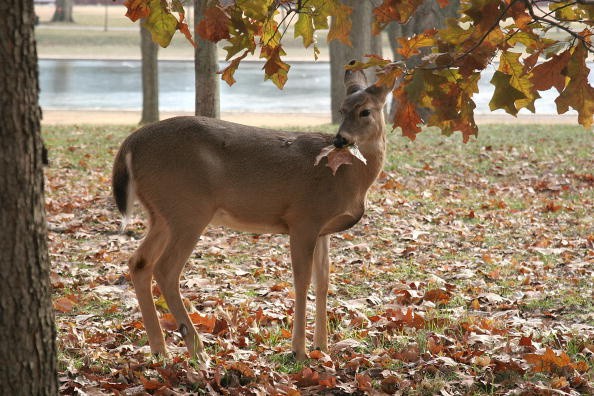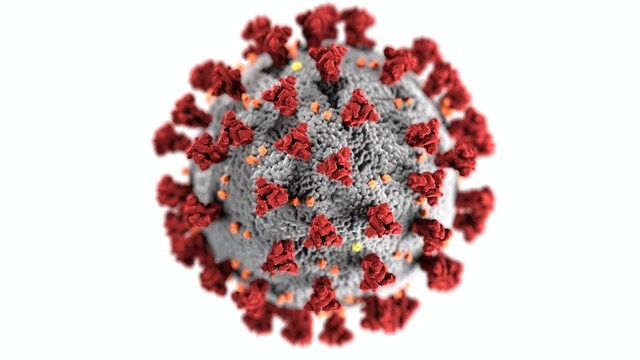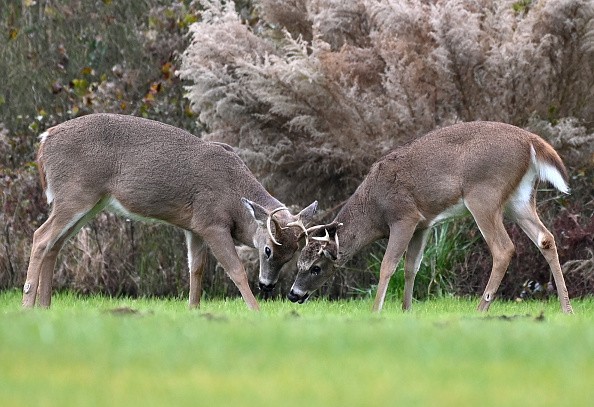SARS-CoV-2 spreads rapidly in white-tailed deer, according to scientists, and the virus is ubiquitous in this deer population across the United States.

Researchers believe the findings are alarming and might have far-reaching repercussions for the coronavirus pandemic's long-term trajectory.
COVID Outbreak

Since the initial appearance of SARS-CoV-2, the coronavirus that causes COVID-19, there have been various indications that white-tailed deer might be particularly vulnerable to the virus - and that many of these animals were contracting it across the country.
In September of last year, computer models revealed that SARS-CoV-2 might readily attach to and infiltrate the deer's cells. According to a recent survey, antibodies against SARS-CoV-2 were discovered in 40% of white-tailed deer in the Northeast and Midwest.
Related Article : Can Deadly Indian Nipah Outbreak Lead to the Next Global Pandemic?
Covid in Deer Populations
SARS-CoV-2 infections were discovered in at least 30% of deer examined across Iowa in 2020, according to veterinarians at Pennsylvania State University. Their research, published online this week, implies that white-tailed deer might become a SARS-CoV-2 reservoir. To put it another way, the animals might carry the virus eternally and transfer it to people regularly.
If that's the case, it'll effectively put an end to all prospects of eliminating or eradicating the virus in the United States - and therefore throughout the world, according to Penn State veterinary virologist Suresh Kuchipudi, who co-led the study.
"If the virus can find another host other than humans, which we call a reservoir," he explains, "it will establish a haven where the virus can continue to spread even if the whole human population becomes immune." "As a result, managing or even eradicating the infection becomes increasingly difficult."
Studying White Tailed Deer
Kuchipudi and his colleagues examined the lymph nodes of over 300 white-tailed deer, including more than 100 wild deer, for the presence of the SARS-CoV-2 virus. "So these animals were either roadkill or free-living deer that hunters had killed [to consume]," says Vivek Kapur, a veterinary microbiologist at Penn State who also co-led the research.
Kapur and Kuchipudi were astounded by what they discovered. Kapur recalls, "It was genuinely extremely spectacular to us." "We were taken aback by a large number of positive samples."
Test Results
A PCR test revealed that roughly 30% of the deer they examined were positive for SARS-CoV-2 between April and December of last year. Then, from Nov. 23, 2020, to Jan. 10 this year, almost 80% of the deer they tested were sick during the winter spike in Iowa. According to Kapur, the virus was 50 to 100 times more prevalent in deer during the outbreak's peak than it was among Iowa inhabitants at the time.
During this period, the researchers sequenced the genes of roughly 100 viral samples. They discovered that the variations circulating in deer matched those prevalent in humans.
Genetic Sequencing
According to Kapur, such genetic sequences indicate that deer in Iowa alone had received the virus from people numerous times during the epidemic. "Once again, the findings show numerous overflow occurrences from people into deer, followed by transmission among the animals."
According to virologist Linda Saif of Ohio State University's College of Veterinary Medicine, humans are certainly infecting white-tailed deer across the country. North America, Central America, and the northernmost part of South America are home to the white-tailed deer. In the U.S. alone, there are an estimated 30 million animals. Another concern, Saif says, is that SARS-CoV-2 could evolve inside the deer and create new strains of the virus. Researchers have already documented such a scenario with minks on farms in the Netherlands and Poland; she points out.
Result of the Study

In those studies, farmworkers passed the virus on to captive animals. As the virus spread through the minks, it mutated and created new variants. These new versions of the virus then spilled back to the humans, the researchers reported.
"The virus has also been found in deer in Ohio," she adds. "And there are antibody tests that show COVID infections among deer in the Midwest and East are rather common."
Although the virus did not appear to make the animals sick, the new findings from Iowa are "extremely alarming," according to Saif.
"Now the question is whether the virus can spread from deer to people, or if deer can efficiently transfer the virus to grazing livestock?" she adds. "We don't know the answers to those questions yet, but if they are true, they are alarming."
Another danger, according to Saif, is that SARS-CoV-2 might develop within the deer, resulting in new viral strains. She points out that researchers have already observed a similar scenario with minks on farms in the Netherlands and Poland.
Read also: Plague 2021: Scientists Recorded Person-to-Person Transmission of Drug-Resistant Yersinia Pestis
For more health and medicine related news, don't forget to follow Nature World News!
© 2025 NatureWorldNews.com All rights reserved. Do not reproduce without permission.





